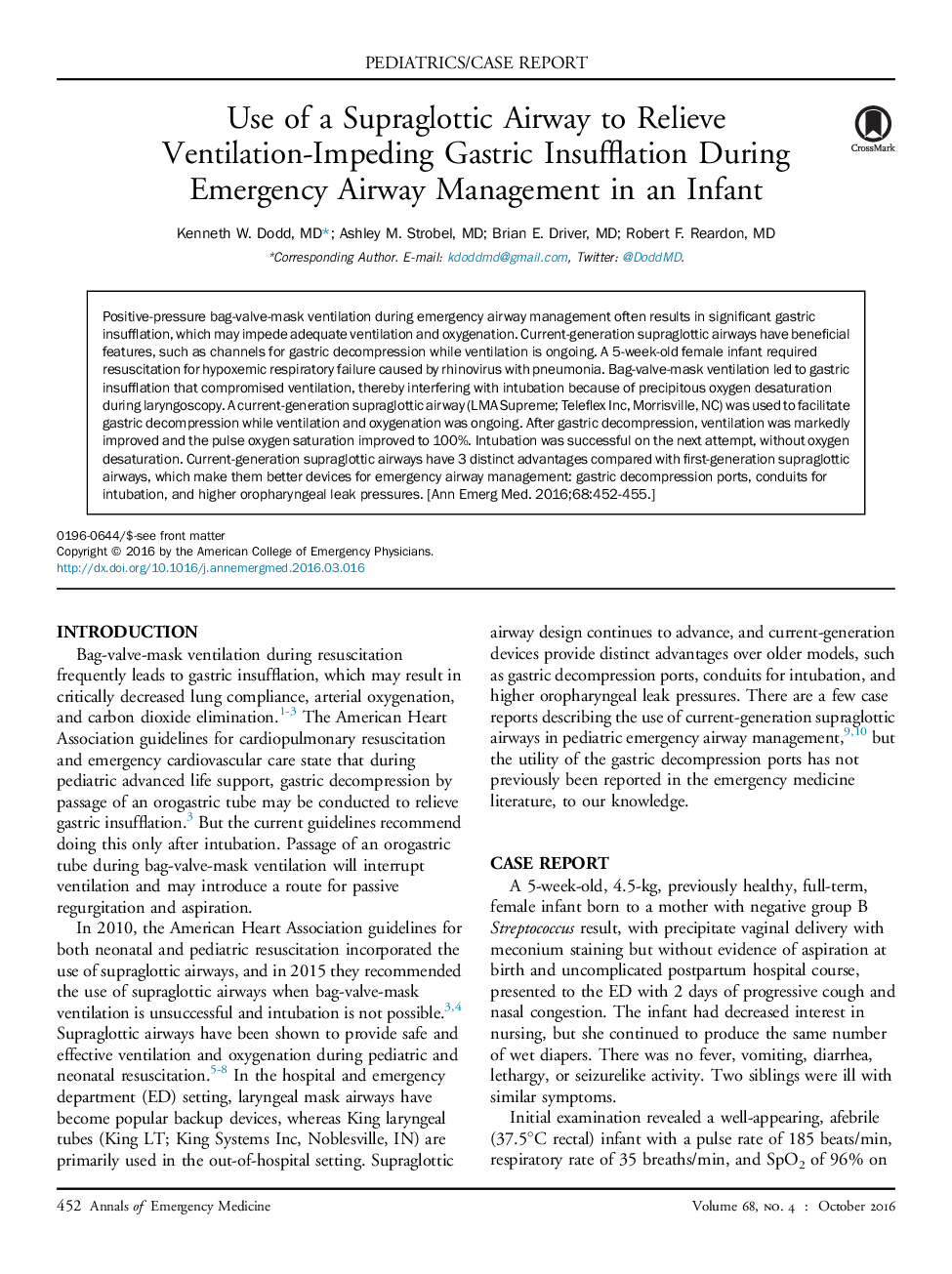| Article ID | Journal | Published Year | Pages | File Type |
|---|---|---|---|---|
| 3228145 | Annals of Emergency Medicine | 2016 | 4 Pages |
Positive-pressure bag-valve-mask ventilation during emergency airway management often results in significant gastric insufflation, which may impede adequate ventilation and oxygenation. Current-generation supraglottic airways have beneficial features, such as channels for gastric decompression while ventilation is ongoing. A 5-week-old female infant required resuscitation for hypoxemic respiratory failure caused by rhinovirus with pneumonia. Bag-valve-mask ventilation led to gastric insufflation that compromised ventilation, thereby interfering with intubation because of precipitous oxygen desaturation during laryngoscopy. A current-generation supraglottic airway (LMA Supreme; Teleflex Inc, Morrisville, NC) was used to facilitate gastric decompression while ventilation and oxygenation was ongoing. After gastric decompression, ventilation was markedly improved and the pulse oxygen saturation improved to 100%. Intubation was successful on the next attempt, without oxygen desaturation. Current-generation supraglottic airways have 3 distinct advantages compared with first-generation supraglottic airways, which make them better devices for emergency airway management: gastric decompression ports, conduits for intubation, and higher oropharyngeal leak pressures.
